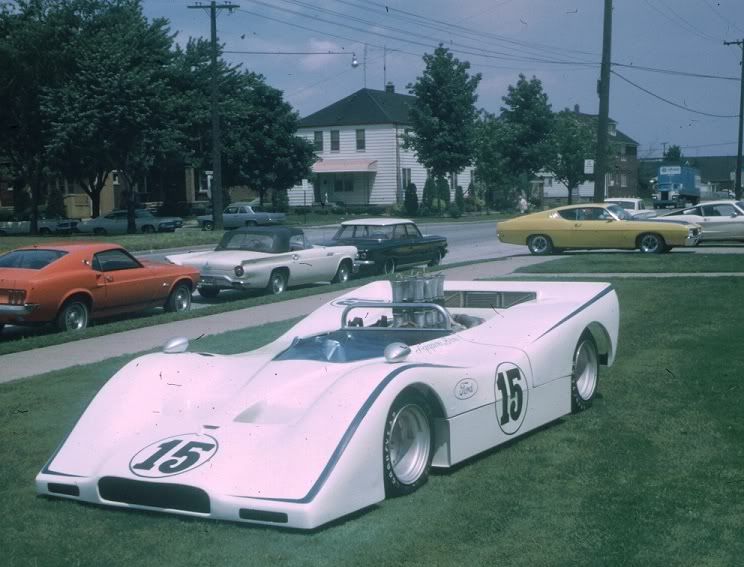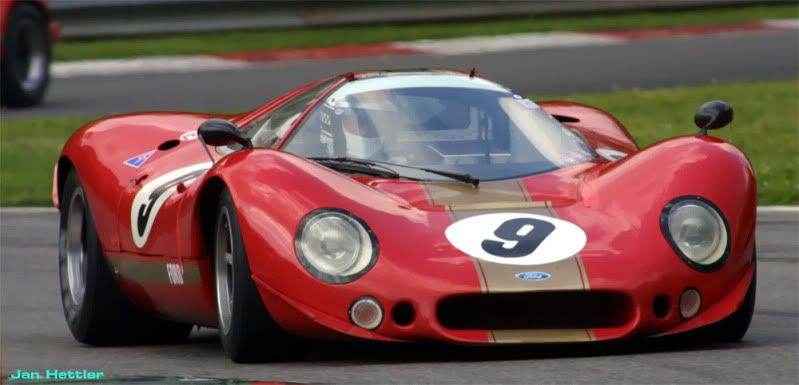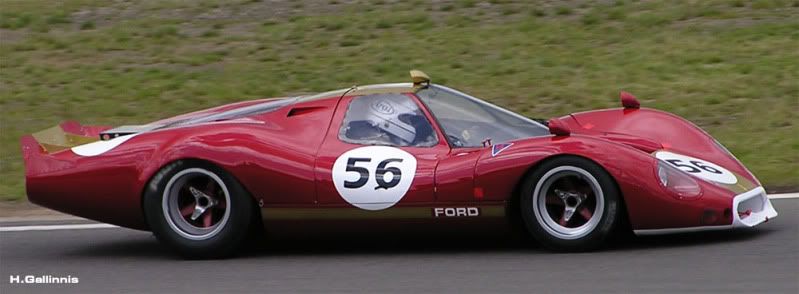I’ve begun to notice a pattern. I have a fascination with race cars that were ultimately unsuccessful in competition, either through poor design, poor execution, or just a lack of financial commitment. Where does the beautiful Ford P68/69 (also known as the F3L) fall in that list?
The P68 was penned by Len Bailey, who was also responsible for the Ford Motor Company funded Can-Am efforts, the Honker II of 1967, and the Open Sports Ford, of 1969, the Honker II having been campaigned by Holman-Moody. And the family resemblance between all three designs is clear to see. Interestingly, all three cars suffered from a lack of funding, a lack of commitment, a lack of race and testing miles, and never reached their true potential.
The Ford F3L (F3L relating to this being a Ford 3 litre), in concept, was a good idea. With Ford money, Bailey design, and the cars built and campaigned by Alan Mann Racing, it was created for the new FIA prototype sports car regulations for 1968, which required a maximum 3,000cc for competition based motors, or 5,000cc for stock block production based motors.
The F3L was built around an F1 Ford DVF V8, backed by a Hewland trans-axle. Unlike the Lotus 49 F1 car, the motor wasn’t used as a stressed-member. It featured a very short wheelbase. The bodywork was incredibly low, and extremely slippery. It was suggested the shape of the car would allow it to reach 200mph, with just 200hp. However, although unquestionably very sleek, and potentially very fast in a straight line, its complete lack of spoilers, splitters, or anything else to aid in downforce, made it almost impossible to drive anywhere near the limit.
Two cars were built by Alan Mann Racing with the intention of it entering the BOAC 500, at Brands Hatch, in April 1968. Mann himself was said to be a little sceptical of the cars design, and its lack of downforce aids. He approached John Surtees about racing the car in the Nurburgbring 1000kms in May 1968, but Surtees wanted to test it first, ahead of its Brands Hatch debut. He suggested young up and comer Chris Irwin as his co-driver. However, in testing at Goodwood, both Surtees and Irwin were alarmed by its handling, and found it quite unpredictable. Surtees wanted to do further testing before the Nurburgring, but was told this was not possible, due to there being a shortage of available DFV motors, as Cosworth favoured supplying Formula 1 teams. So, with that, Surtees withdrew his offer to race the car, but Irwin, still working his way up the motorsport ladder, decided to continue with it regardless.
Race 1. BOAC 500, Brands Hatch, April 1968. Two F3L’s were constructed for the BOAC 500, the second car being finished only just in time for the race. Drivers were Jochen Rindt/Mike Spence, and Bruce McLaren/Denny Hulme. McLaren/Hulme were an eleventh hour substitute for Jim Clark/Graham Hill, as both instead raced in an F2 event at Hockenheim for Lotus, where Clark was killed.
McLaren qualified second for the BOAC 500, but the Rindt/Spence car was withdrawn when its DFV failed, and the team had no spares. So Spence was teamed with McLaren for the race in the remaining car. After a slow start, McLaren moved forward, and was leading the race by the first round of pit stops, but Spence retired a short time later with a broken driveshaft.




 Reply With Quote
Reply With Quote






